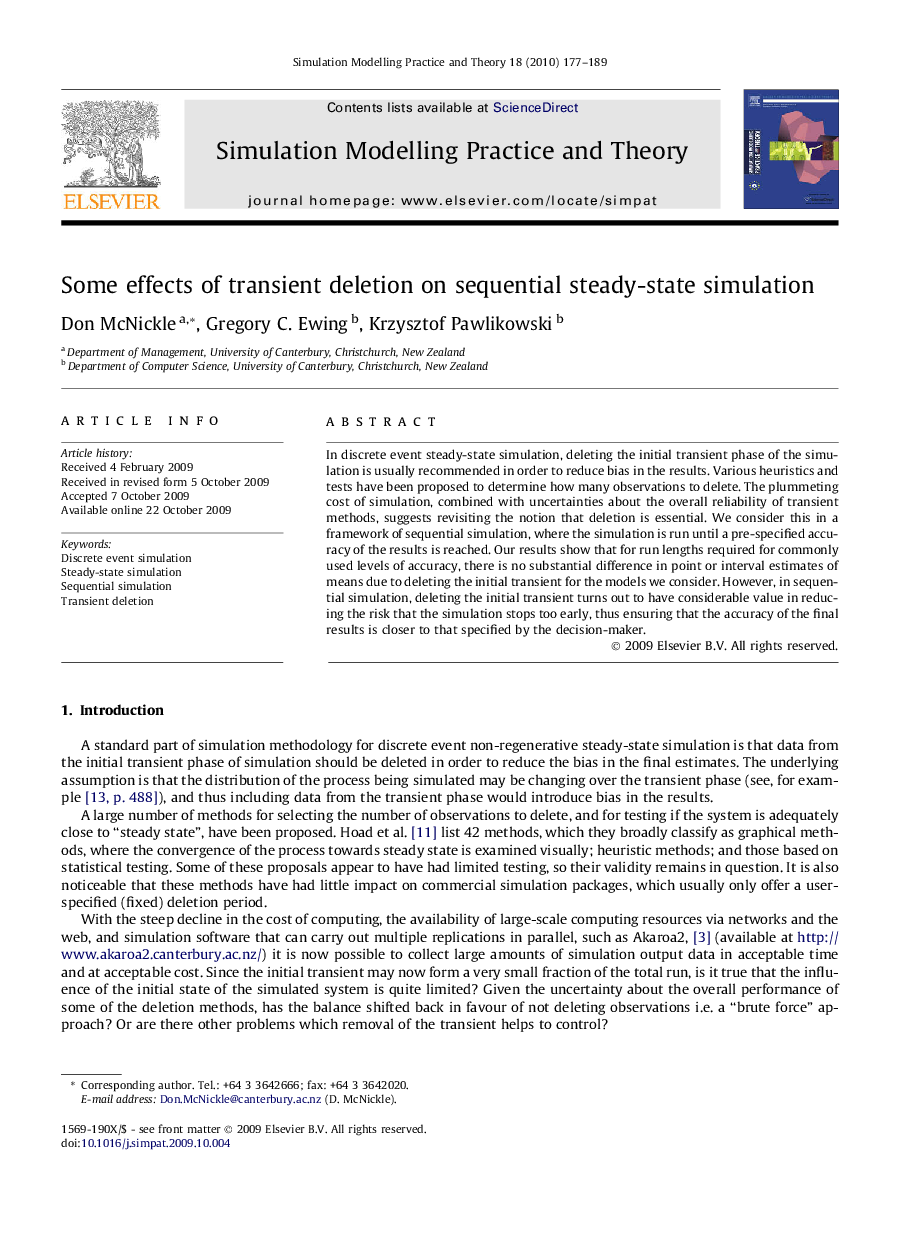| Article ID | Journal | Published Year | Pages | File Type |
|---|---|---|---|---|
| 493422 | Simulation Modelling Practice and Theory | 2010 | 13 Pages |
In discrete event steady-state simulation, deleting the initial transient phase of the simulation is usually recommended in order to reduce bias in the results. Various heuristics and tests have been proposed to determine how many observations to delete. The plummeting cost of simulation, combined with uncertainties about the overall reliability of transient methods, suggests revisiting the notion that deletion is essential. We consider this in a framework of sequential simulation, where the simulation is run until a pre-specified accuracy of the results is reached. Our results show that for run lengths required for commonly used levels of accuracy, there is no substantial difference in point or interval estimates of means due to deleting the initial transient for the models we consider. However, in sequential simulation, deleting the initial transient turns out to have considerable value in reducing the risk that the simulation stops too early, thus ensuring that the accuracy of the final results is closer to that specified by the decision-maker.
